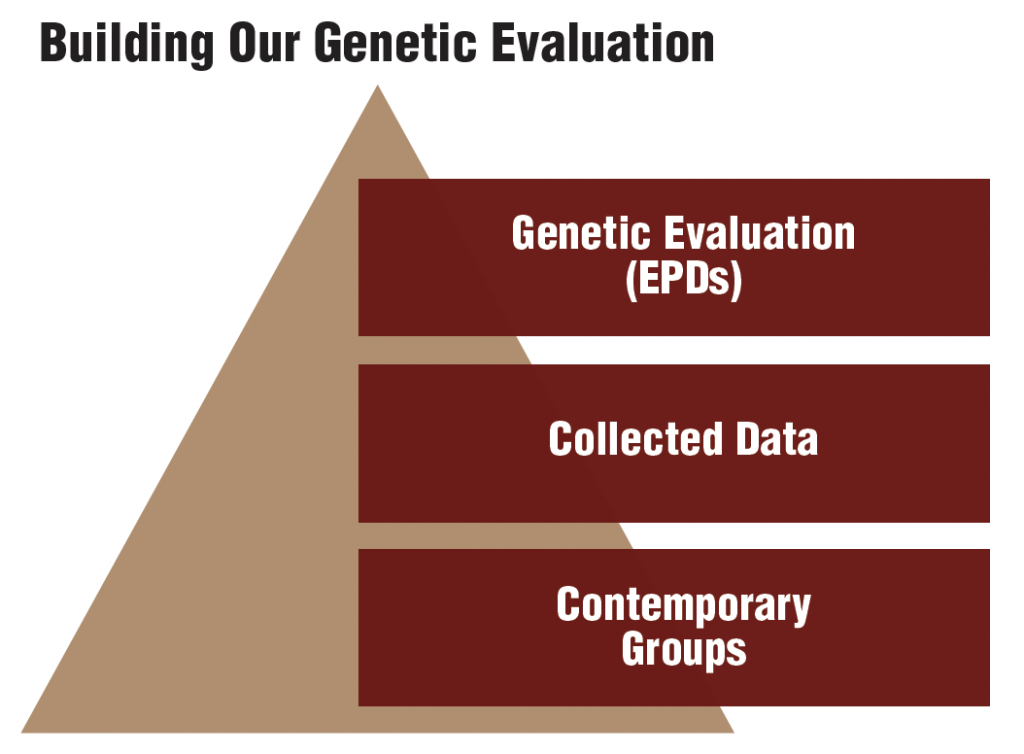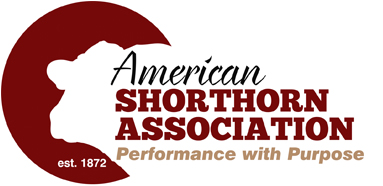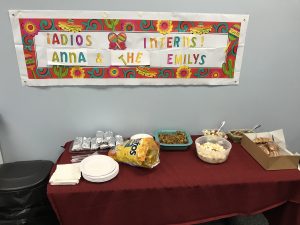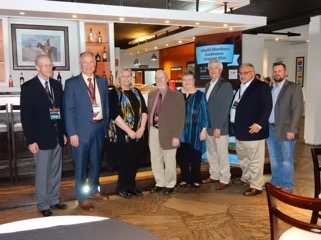Proper contemporary groups are just as important to our database and genetic evaluation as proper data collection. Data and contemporary groups build on each other in order to have a strong genetic evaluation. Contemporary groups can be a bit overwhelming, and rightfully so. Knowing which animals belong together in one group or another can take some time to fully grasp. It’s a topic that has been covered many times, but a little refresher course hasn’t ever hurt anyone. Hopefully by sharing some background information and a few helpful hints, your understanding of contemporary grouping will become clearer.
Why We Need Contemporary Groups
As you know, not all weights and measures are created equally because not all cattle are managed in identical environments.

So how do we use data in genetic evaluations when it’s not all collected on an equal playing field? By utilizing proper contemporary groups! Our EPD calculations are driven by comparisons in performance between animals, rather than actual measurements for a trait. Contemporary groups are used to define which animals are to be compared to each other within a herd. By making sure we compare the right animals to each other, we get the best information available to fuel the EPD calculations. Having weights recorded is important, but having the right weights recorded in a contemporary group together is equally necessary.
When to Worry with Contemporary Groups
I commonly get asked when in the production cycle to start paying attention to contemporary groups. The answer is the day your first calf is born, and every time you collect a new piece of data in your herd. Contemporary groups start when birth records are recorded. It is important to ensure that you have your calves grouped correctly at birth, because all subsequent contemporary groups are based off the initial birth groups. The largest contemporary groups will always be for birth records, since cattle can only be removed from the original contemporary group over time. Every time a new data point is collected, the contemporary group should be examined for animals that might have been treated differently and are no longer fairly compared to the rest of the group. Once an animal is no longer on the same playing field (either advantaged or disadvantaged), they need to be regrouped. If you have a calf that gets really sick between birth and weaning, or if you choose some calves to begin prepping for the show barn, those cattle should be removed from the larger contemporary group. When collecting data such as weaning, yearling, or ultrasound, the date of data collection also dictates contemporary groups. All the calves that need to be in the same weaning contemporary group need to have their weaning weights taken on the same day. If there are multiple weighing days, then you will have multiple contemporary groups.
How to Build Your Contemporary Groups
There are some rules you will want to follow when putting your cattle into the proper contemporary groups. The sex of calf is a major factor, always sorting heifers and bulls into their own groups at birth, and then into heifers, steers, and bulls for any data collected from weaning onward. Grouping calves by calving season is also important. Most breeders calve in smaller windows and don’t have to worry too much with season. However, if you don’t have a tight calving season, it is recommended to group your birth contemporaries into 90-day windows to get a fair comparison. Obviously, management and location are a major factor. If you run cows on multiple ranches, then you will have contemporary groups for each ranch. Fortunately, Digital Beef does a pretty good job of covering some of these bases for you. If you need to manually put cattle into different groups, there are functions available to help you do so, such as the “Season” (birth recording) and “Mgmt” (Weaning) options when recording data.As always, we want to help you if you have any questions with your contemporary groups. Not only does having them done correctly benefit you, but also the rest of the breed as we continue to build our database. A stronger database is the foundation for better EPD calculations.





![[ Random Image ]](/wp-content/themes/shorthorn/headers/header11.jpg)






